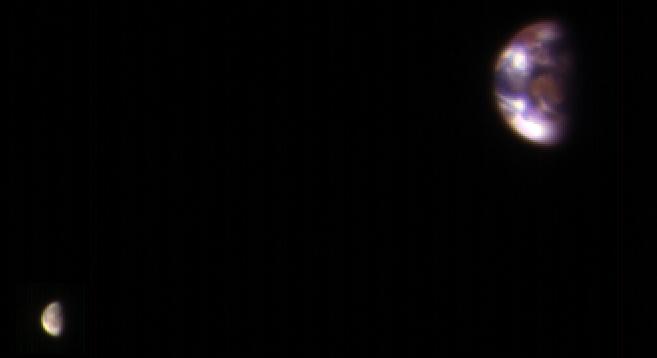
By TIME Photo
NASA released a composite image of Earth and the moon on Friday, combining the best image of Earth with the best image of the moon.
The images were captured on Nov. 20, 2016 by the High Resolution Imaging Science Experiment (HiRISE) camera on NASA’s Mars Reconnaissance Orbiter. At the time, Mars was about 127 million miles from Earth.
Both images were processed separately and then combined due to the difference in the brightness of both bodies. “The moon is much darker than Earth and would barely be visible at the same brightness scale as Earth,” NASA said.
The image still reflects the correct size and positions of both bodies.
More Must-Reads From TIME
- The 100 Most Influential People of 2024
- How Far Trump Would Go
- Scenes From Pro-Palestinian Encampments Across U.S. Universities
- Saving Seconds Is Better Than Hours
- Why Your Breakfast Should Start with a Vegetable
- 6 Compliments That Land Every Time
- Welcome to the Golden Age of Ryan Gosling
- Want Weekly Recs on What to Watch, Read, and More? Sign Up for Worth Your Time
Contact us at letters@time.com